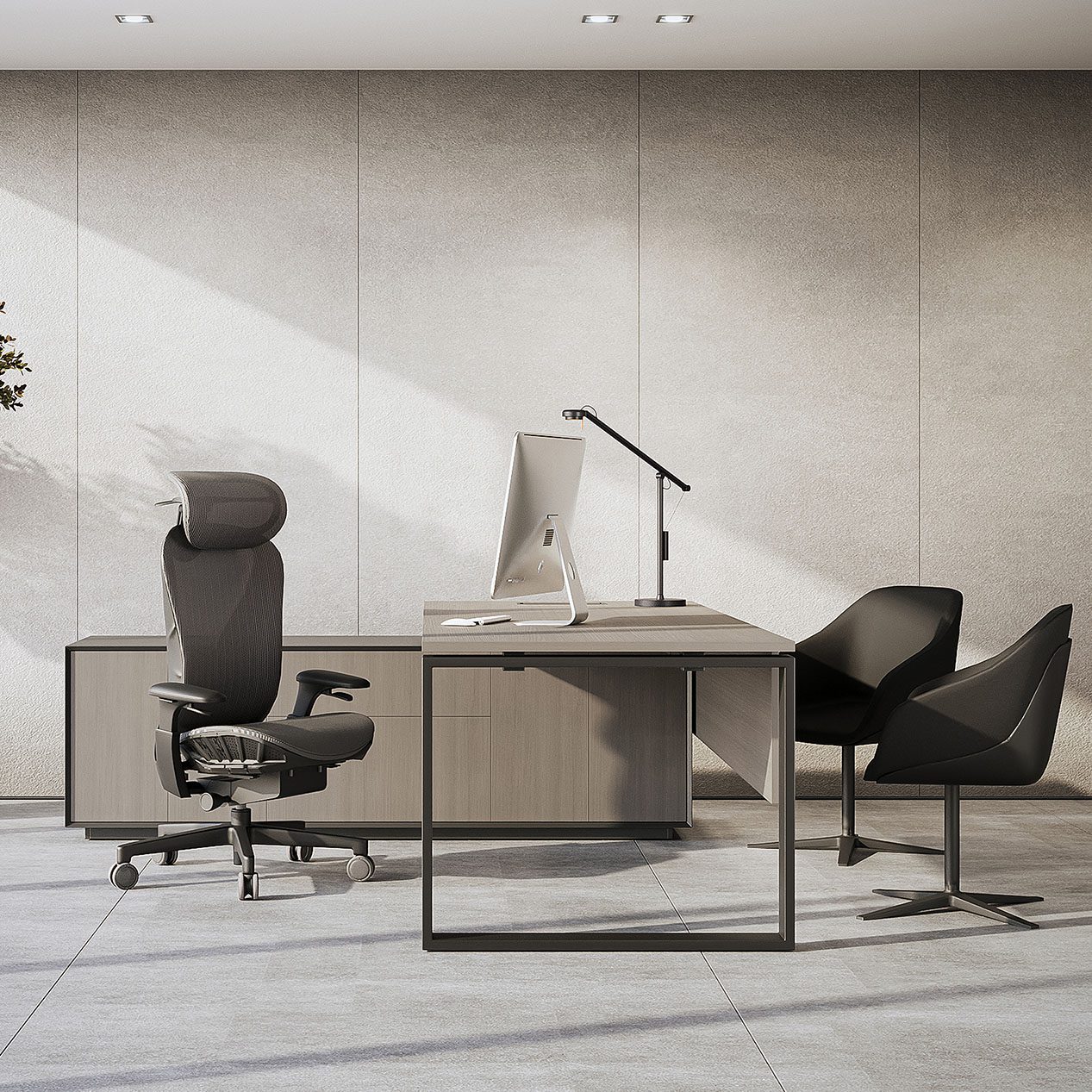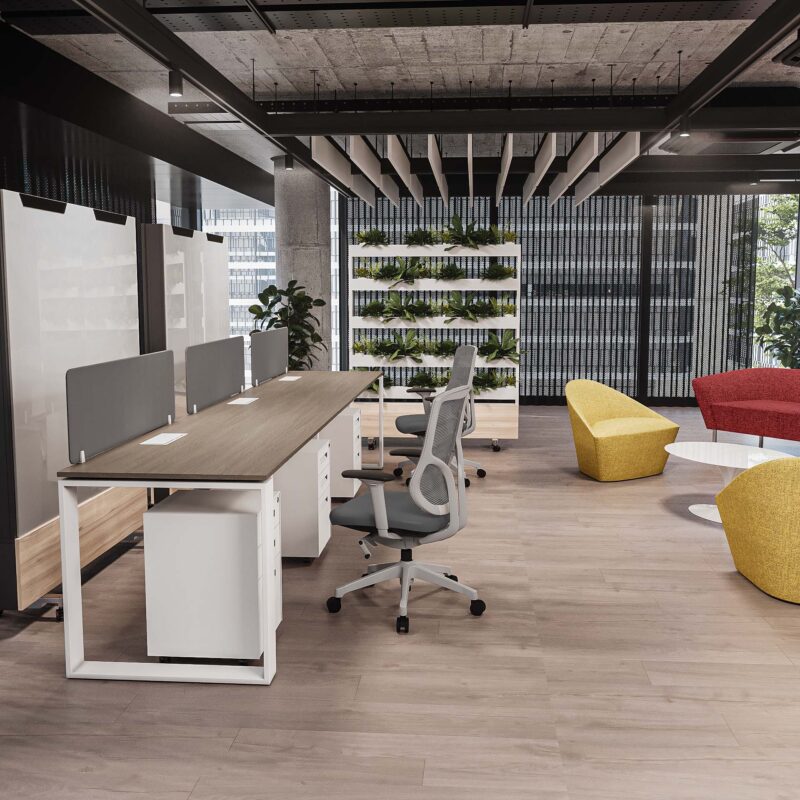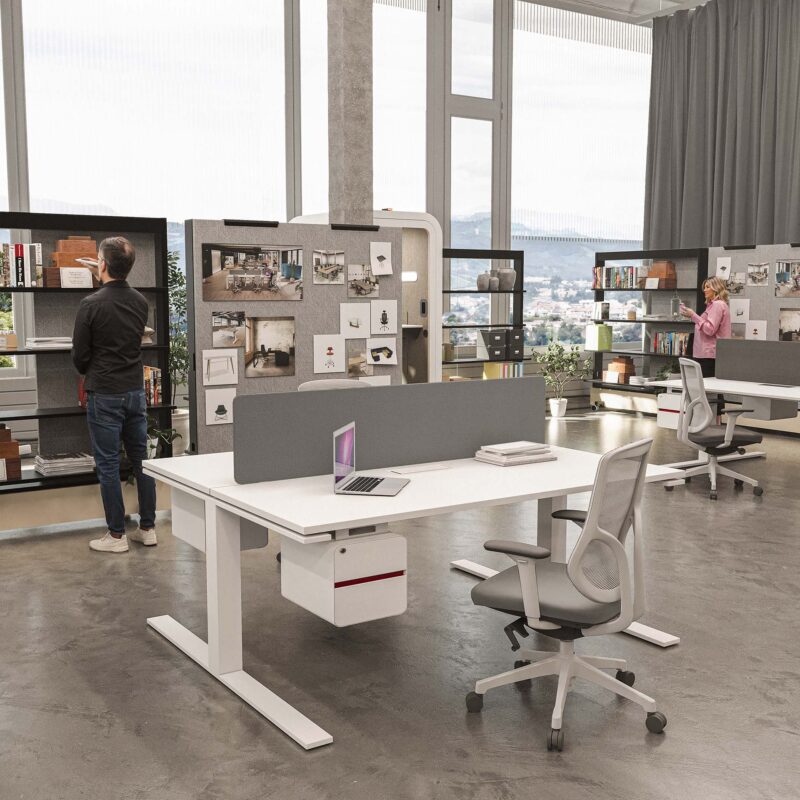Comparing Office Furniture Styles: Minimalist vs Executive

Comparing Office Furniture Styles: Minimalist vs Executive
Offices are more than just how they look on the surface. They reflect the company culture, what the business cares about, and how professional everything seems. Picking the right office furniture affects how people see your team and how clients view you, and even changes how productive your workspace can be. These days, two big styles get attention in workplaces: minimalist and executive office furniture. Both have their good points, but they create really different atmospheres. Many wonder whether their office would look better with a simple, no-clutter minimalist look or something more substantial and stand out with executive pieces. You’re not the only one pondering this. This article discusses both choices and outlines what you need to determine the right pick.
Minimalist vs Executive: Defining & Comparing the Styles
Desks
Minimalist desks keep things simple, stay clean, and work well. You see smooth lines, colors remain neutral, and parts fit together easily. All of this suits modern open offices just right. On the other hand, executive desks are made to influence, aiming to make a statement. Picture a big top surface, rich and fancy wood, and a design showing authority and permanence. As minimalist ones help with space, they let you move things around and are flexible. Executive desks show strength and prestige.
Chairs
Office chairs say more about your work than you might think. Minimal furniture is usually placed next to an ergonomic, movable, and clear working chair to reassure others rather than flash. Conversely, the executive space is generally equipped with an executive chair with a high back and leather. The managers and standard office chairs combine function with a little more eye weight and lie between the extremes.
Storage Solutions
Minimal storage setups use hidden compartments, slim cabinets, and adjustable shelves, all of which keep the clutter out of view. Executive storage takes a different approach, though. It features open bookshelves, a big storage cabinet, and a Polish credenza, which is the room’s main attraction. Minimal options let teams stay focused; no distractions get in the way. Executive ones serve double duty, act as style choices that show professionalism, and hint at a sense of legacy.
Meeting Tables
Collaboration hinges on the table around which it occurs. Minimalist tables are light and overly flexible, and they work for chats in mixed-up spaces and hybrid setups. Then there’s the executive meeting table on another level, like a full command spot. It’s enormous, solid, and usually loaded with fancy add-ons. These aren’t mere tables; they stand for power and decisions.
Acoustic Pods
Minimalist offices prefer acoustic pods with an impersonal tone and discreet design that perfectly complement an uncluttered layout. The executive office, on the other hand, may choose a larger, more exclusive pod with a luxurious finish that resembles the rest of the furnishings. Together, they serve a grave function in today’s hybrid workplaces, providing a quiet, focused workspace in an otherwise busy atmosphere.
Read Also: Office Furniture Solutions for Executive Offices in Abu Dhabi
Cost, Maintenance & Durability
When it comes to purchasing minimalist furniture, especially in the case of a growing establishment, it is by far more economical. Executive furniture, by contrast, usually comes with a higher initial cost, but it also extends the feeling of stability.
- Minimalist furniture: lightweight, modular, easier to replace or expand.
- Executive furniture: Made from premium components, like wood and leather, it is developed to last but requires extra care.
Durability is also different: minimalist pieces may show wear, but repair or replacement is simple and viable. Executive furniture can withstand eras, but repairing it comes with higher costs.
Impact on Workplace Culture & Perception
Furniture isn’t just about filling a space; it sends a message about your brand and work culture.
- Minimalist offices: uncluttered, open, and modern, projecting efficiency and collaboration.
- Executive offices: formal, authoritative, and traditional, signaling stability and respect.
Workers counteract differently, too. Minimalist design can promote agility and openness, while an executive environment can bring pride and awareness of belonging to a stable and respectable enterprise.
Choosing What Works Best
The good news is that you don’t always have to choose between minimalist and executive styles. Many offices merge the two today, using minimalist furniture for normal functions while integrating an executive piece in an obvious space like boardrooms. It’s about coordinating your office style with your aspirations at the end of the day. Are you looking for project agility and breakthrough, or authority and tradition? Either way, striking the right balance means employees feel comfortable there, and clients are more confident in what you do.
If you aren’t sure where to go, Urban 411 can point you in the right direction. With expertise in a simultaneously minimalist and executive way, we encourage companies to choose your design workspace, which has a consistent function, style, and distinctive identity. The right office furniture choice can transform your office, and we are here to facilitate that transformation more easily.
FAQs
- What is the main difference between minimalist and executive office furniture?
Minimalist office furniture focuses on clean, functional, and space-saving designs, while executive furniture emphasizes prestige, authority, and premium finishes. - Which office furniture style is better for small businesses?
Small businesses often prefer minimalist furniture because it’s cost-effective, flexible, and easy to adapt as teams grow. However, adding a few executive pieces can elevate client-facing areas. - Is executive office furniture more durable than minimalist furniture?
Executive furniture is usually made from solid wood, leather, and premium materials, making it long-lasting but more maintenance-intensive than lighter, modular minimalist pieces. - Can I combine minimalist and executive office furniture in one workspace?
Yes, blending both styles works well. Many companies use minimalist furniture for everyday tasks and executive pieces for meeting rooms or leadership offices to create balance.




